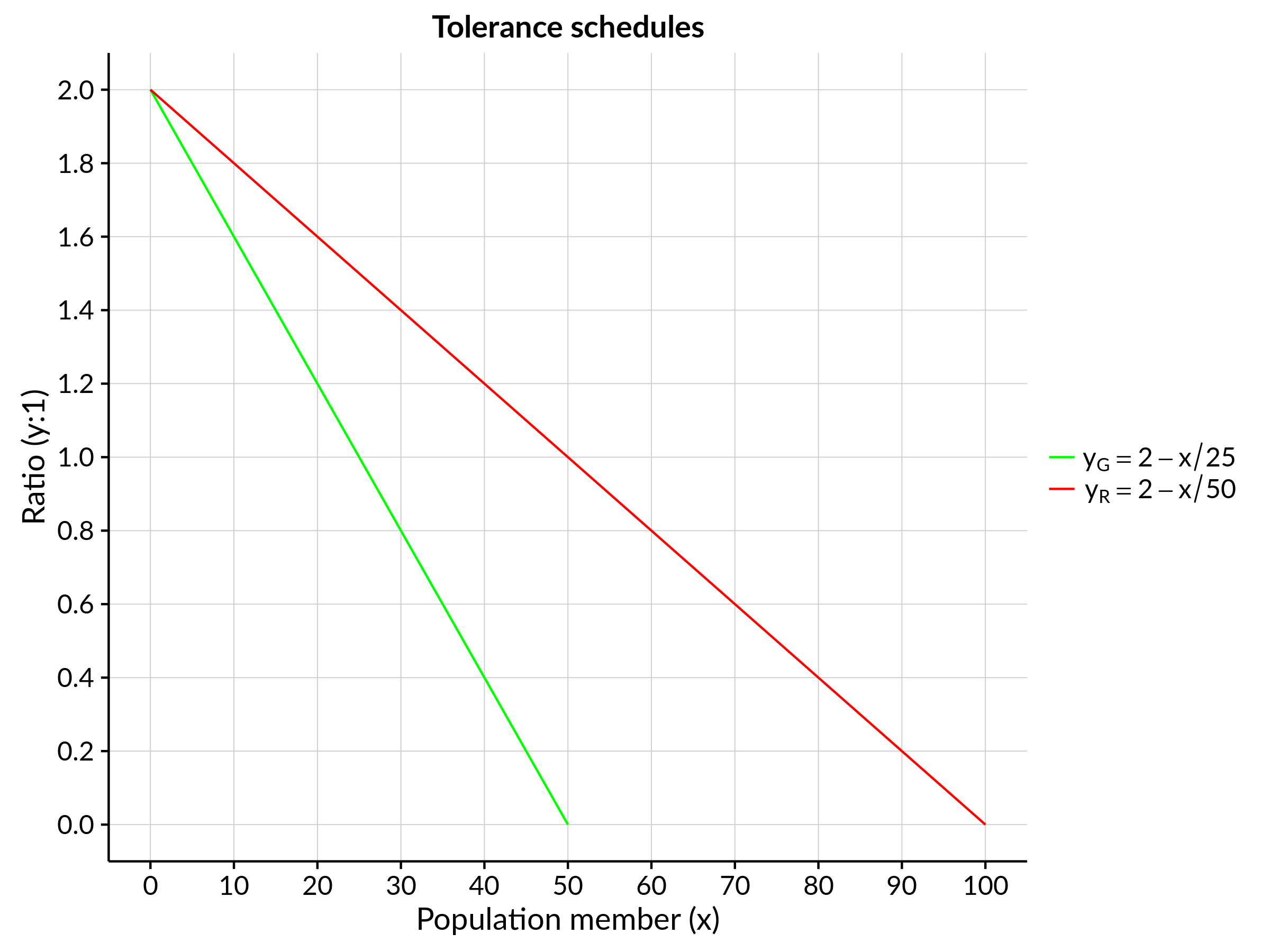Why we need maths in economics 2(b) - Schelling’s segregation model
When research has been done in racially segregated neighbourhoods, one interesting (and consistent) finding is that respondents from these areas generally claim to desire more integration. “We don’t want to live in segregated neighbourhoods!” they implore. However, there are usually some important caveats thrown in and a typical response might be, “I want to live in an integrated neighbourhood... just as long as I am not in too much of a minority”. Nevertheless, what if such “very minor” discriminatory preferences are still enough to lead us to completely segregated outcomes?
This is the question that Nobel laureate Thomas Schelling first explored in a seminal paper back in 1969. He later extended his analysis in a series of subsequent books and articles (e.g. here). Alongside his contributions to game theory and conflict strategy, the brilliance of Schelling's work was to examine not only the underlying motivations characterising individual behaviour, but also the implications of individuals acting on each other in the aggregate.
I say “in the aggregate”, though this is a potentially misleading phrase. We have become used to interpreting “aggregates” as something like the average behaviour of individuals. However, much of Schelling’s research has been aimed at proving the exact opposite; i.e. that aggregate results in society are not necessarily simple extrapolations from the individual. Instead, aggregate outcomes are often much more complex since they result from a system of interactions between individuals and their environment. In other words, we impact others and our environment by our actions, while they impact us in turn. These complex interactions can lead to the emergence of surprising and even undesirable outcomes when considered at the societal level. This led Schelling to make the famous distinction between "Micromotives and Macrobehaviour".
Right, so let’s establish the stylised “facts” for the particular model that we’ll be using here. The most important assumptions are as follows:
- People live in different neighbourhoods. If someone is unhappy with their current neighbourhood, then they can costlessly move to a new one. In this model, the only thing that makes people (un)happy about where they live is the racial profile of their neighbours.
- For simplicity we specify a population that consists of only two ethnic groups: greens and reds. In this example, we’ll assume that there are 50 greens in the population and 100 reds.
- Both green and red individuals have a variety of “tolerance levels”, reflecting the maximum ratio of race mixing that each person is prepared to accept in his or her neighbourhood. If the colour ratio exceeds a person’s particular tolerance ratio, then they will move to another neighbourhood where they are satisfied. Those with the highest intolerance will move first.
- Finally, we assume that tolerance levels among greens and reds can be ordered sequentially from high to low. For both groups, let us say that the most tolerant individual will accept a ratio of 2:1. (In other words, he or she would be willing live in a neighbourhood as a one-third minority.) The median individual will then tolerate a ratio of 1:1, while the least tolerant will accept no person of opposite colour in their neighbourhood.
Importantly, the above phase diagram also depicts the dynamics of motion of the system. This is what the arrows are showing us: We can see how the populations of the two groups will be changing at any particular point. For example, the bottom-left arrow (pointing up and to the right) indicates that the numbers of reds and greens will be increasing together at low population levels. However, if reds begin to settle in the neighbourhood at a faster rate than greens, then some greens will be motivated to leave. This in turn exacerbates the problem, since the ratio of greens to reds now becomes even worse which prompts more greens to leave! And so, we inexorably move towards neighbourhood comprised entirely of reds. (This is depicted by the bottom-middle arrow that is pointing down to the right.) In this way, the dynamics of motion show us that we can approach three possible equilibria. However, only two of these — the completely segregated outcomes — are stable. The mixed equilibrium combination is unstable since any disturbance, the departure or arrival of a new neighbour, has the potential to set off a chain reaction that will ultimately lead to one colour completely dominating the neighbourhood!
Now, of course, this was a rather specific example used for illustration. You might ask whether the segregated outcome depends for instance, on the relative sizes of our green and red populations? The answer to that question is “not really”. A one-colour equilibrium is still the inevitable result even when we have reds and greens in equal numbers. However, having equal numbers together with steeper tolerance schedules will tend to produce a stable equilibrium. For example, if there are 100 reds and greens and they both have a tolerance schedule where the median individual can tolerate being in a 2.5:1 minority, then we end up with the following:
Note: Those of you paying attention might notice that this video is slightly different in terms of set-up to the model that I have discussed above, in that it each person (egg's) neighbourhood is limited to the spaces immediately alongside them. Schelling called this a "spatial proximity model". In contrast, the model presented above analyses the make-up of the neighbourhood as a whole and is called the "bounded neighbourhood model".



Comments